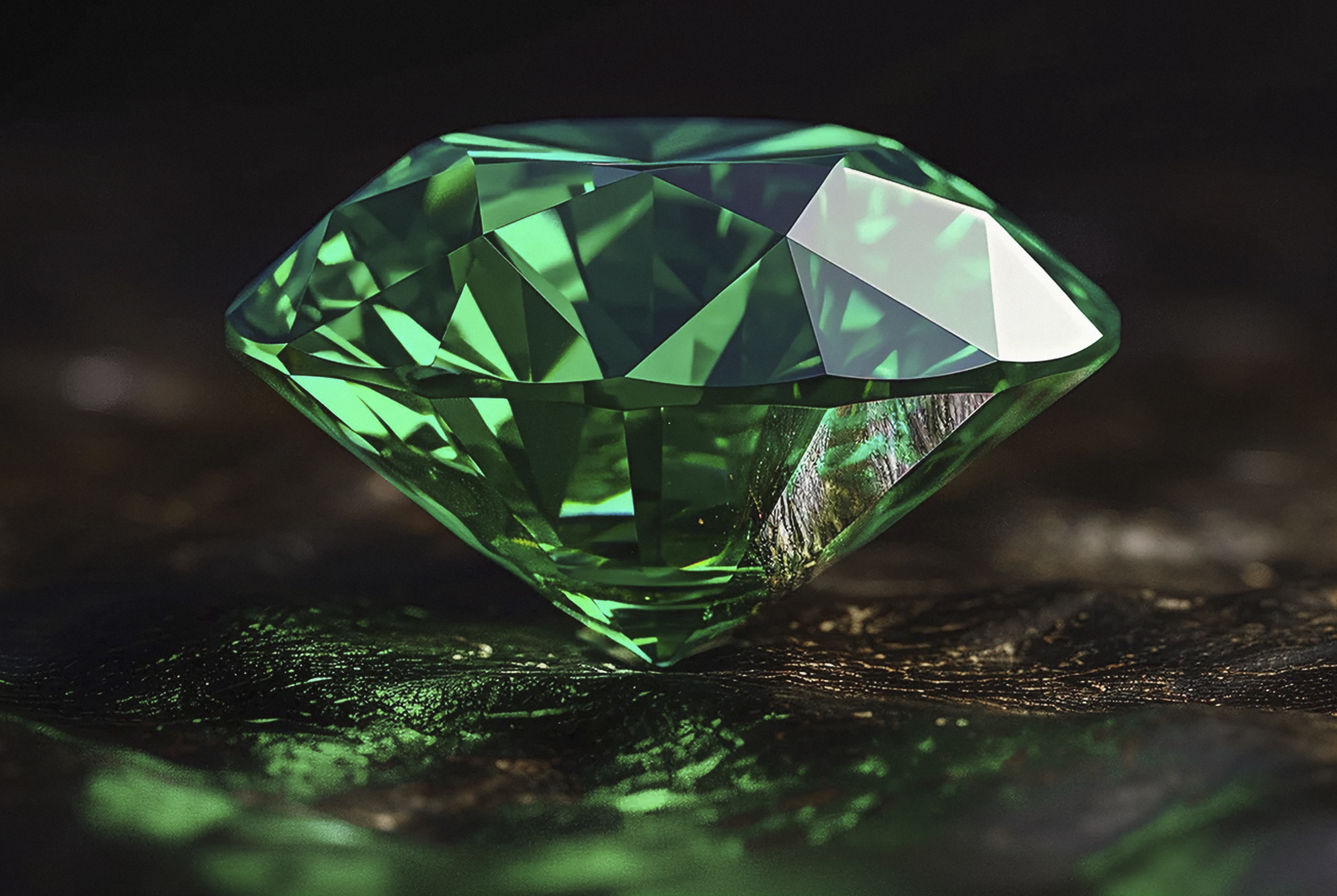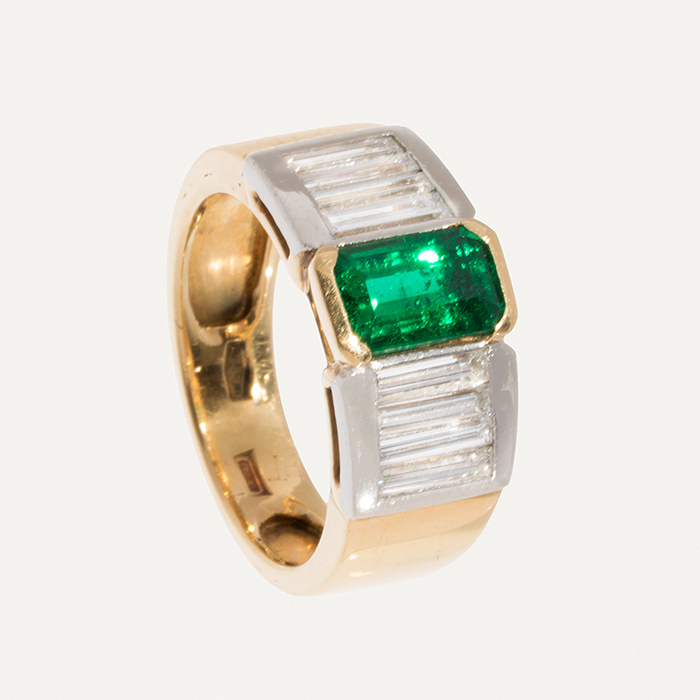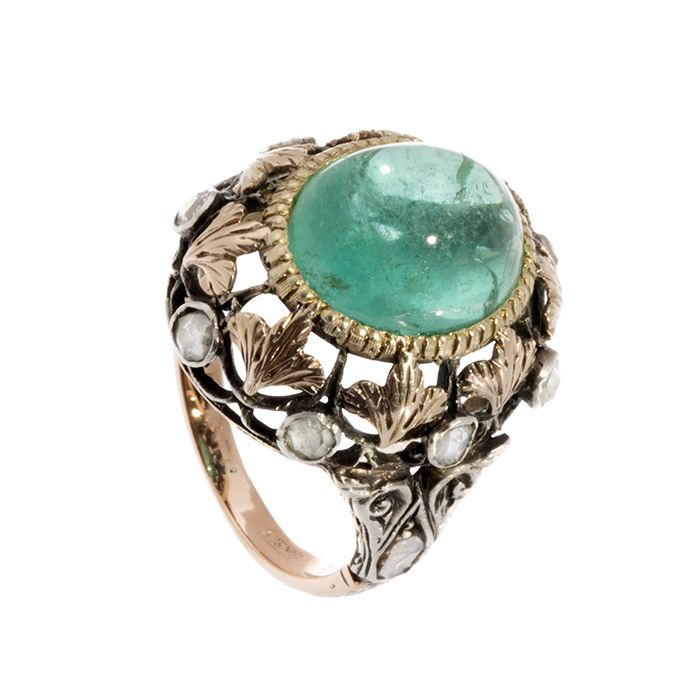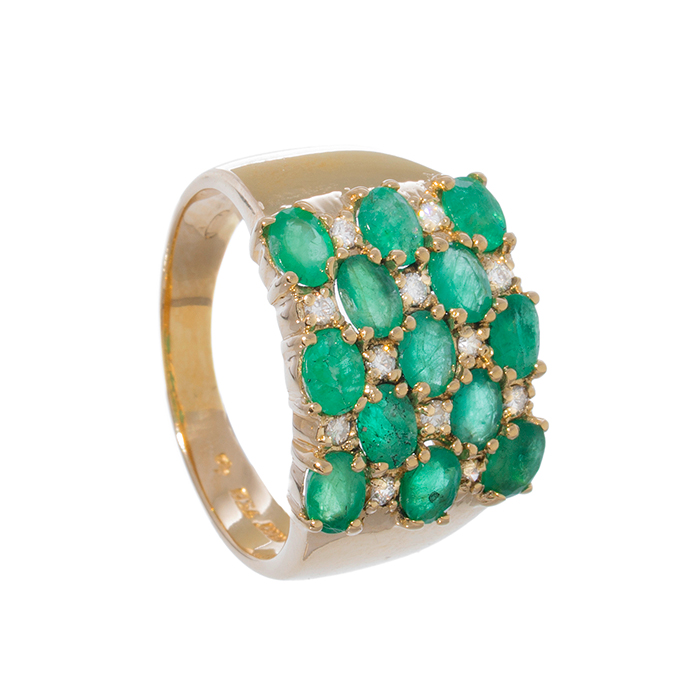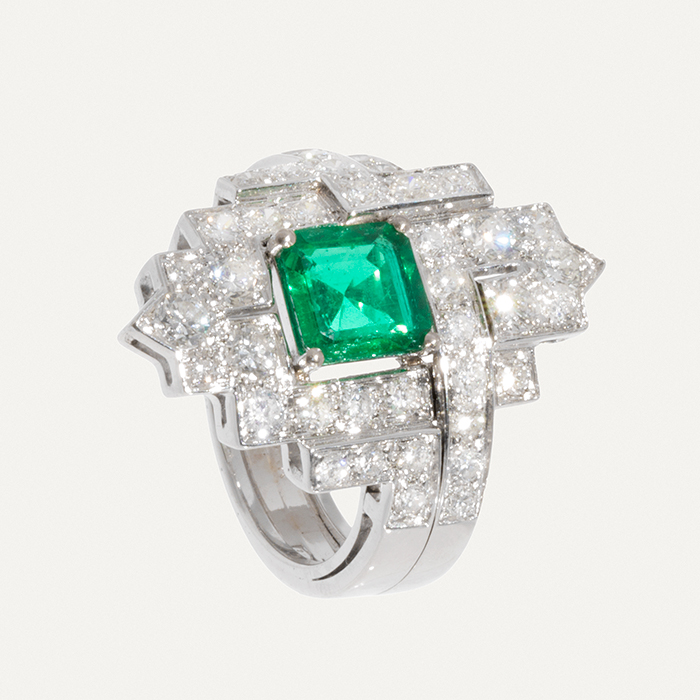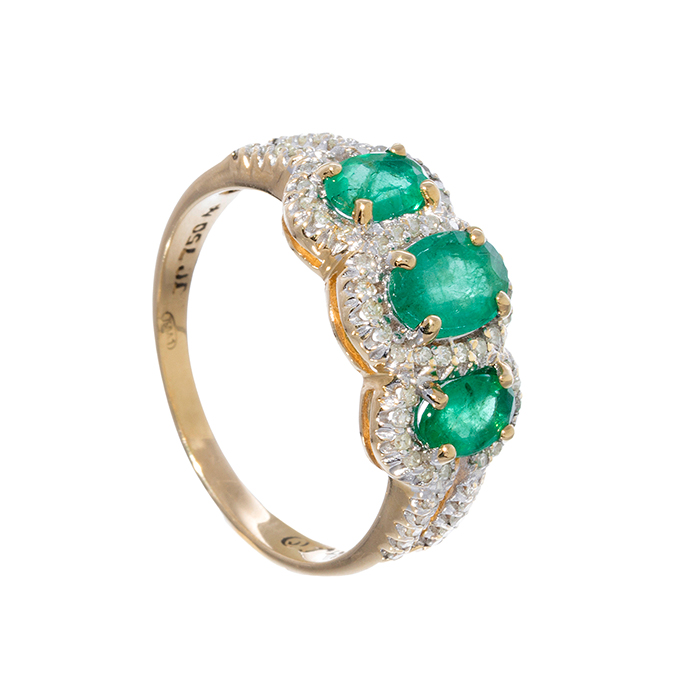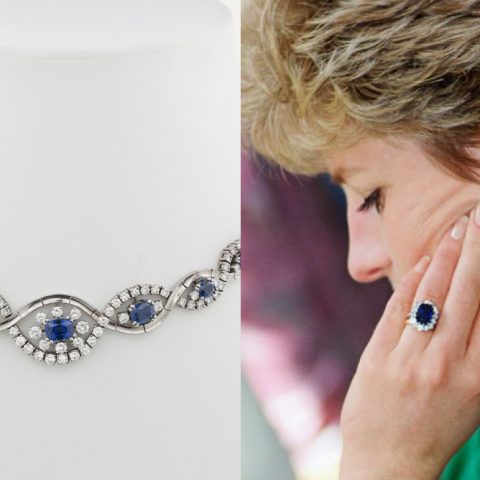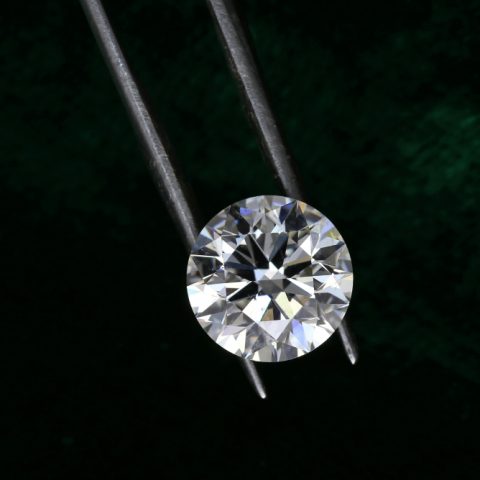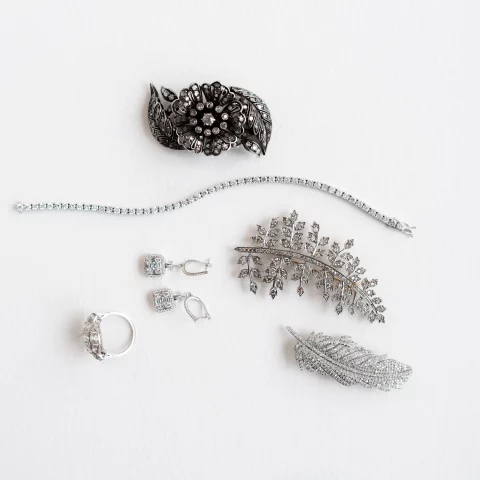Origins: An ancient history
Emeralds have been revered and cherished for thousands of years for their mesmerizing green color and potent symbolism. These gems are among the four “great” gemstones, along with diamonds, rubies and sapphires, and have captivated civilizations for centuries, from the ancient Egyptians to the Greeks, Romans and Incas. In fact, emeralds were common offerings in the shrines of Aphrodite to ask for love and fertility, and it was customary to turn them into powder for use as medicinal lotions.
The Egyptian emerald mines were the main source of emeralds in the world, since 1500 B.C. They adorned the jewelry of Cleopatra VII Philopator, the last pharaoh of Egypt, who used these stones as a symbol of rebirth, fertility and for medicinal purposes. Pharaohs were buried with emeralds, symbol of eternal life.
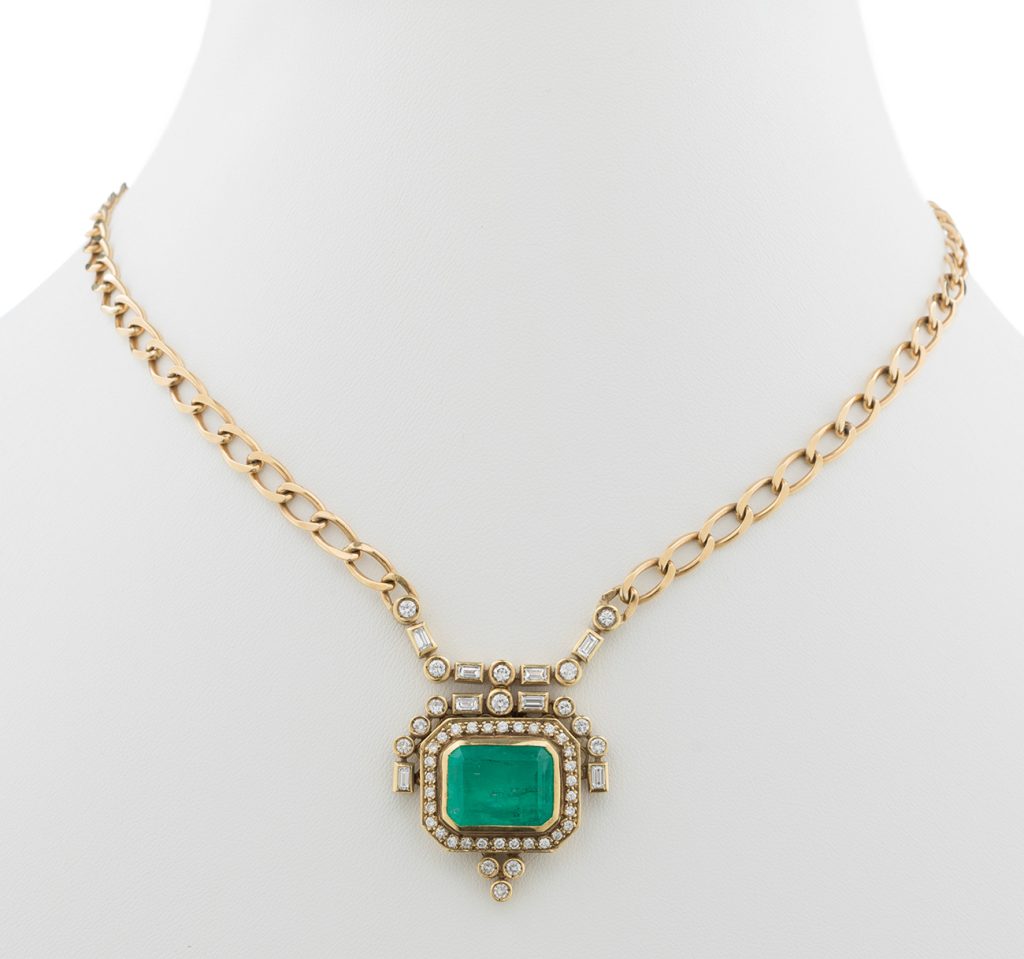
Characteristics: beryls, inclusions and formation
They are natural gemstones that are part of the beryl family, to which aquamarines and morganites also belong. They have natural inclusions, commonly called “garden”. These are formed when gaseous, liquid or solid components become trapped inside the stone. Finding emeralds that have no visible inclusions is extremely rare. These small “imperfections” are fundamental in obtaining information about the geographical origin, making each emerald an unrepeatable stone.
They are found in the surface layers of the earth, and can take up to 100,000 years to form. They are generated within the pegmatite rock, cooled magma. This rock contains beryllium, chromium and/or vanadium, the minerals that turn into emeralds acquiring their characteristic green color. They can also form inside hydrothermal veins, when hydrothermal fluids escape from the earth’s core, cool and mix with the same minerals, creating the emeralds.
Care: How to preserve your emerald
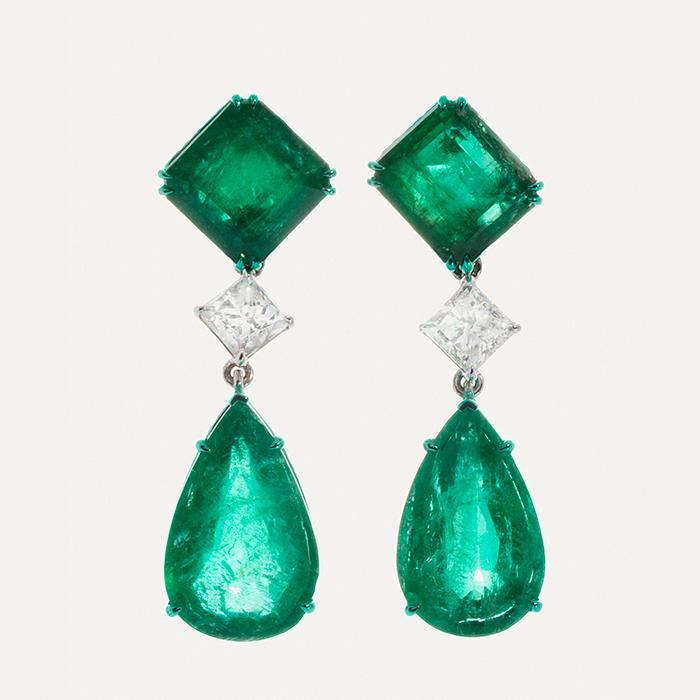
–Strength: Emeralds are rated 7.5-8 out of 10 on the MOHS mineral hardness scale. They are not the hardest gemstone (that accolade goes to diamonds), but they are certainly tough. In this regard, the setting, setting and mounting are key elements in ensuring their strength.
– Temperature: Heat adversely affects emeralds. Drastic changes in temperature can generate tension in the inclusions, which can cause them to crack. You should avoid certain daily activities, such as washing your hands with very hot water or using a hairdryer when wearing your emerald ring or earrings.
– Cleaning: Avoid using chemical products to clean your emerald jewelry, nor brushes that can scratch or damage them. Be sure to use a soft cloth if you decide to do so, dampened with a little water.
At Setdart we offer professional jewelry consulting services, do not hesitate to contact us.

